Ideally, the diameter of the conductors should correspond to the stated parameters. For example, if it is stated on the labeling that the cable is 3 x 2.5, then the cross-section of conductors should be exactly 2.5 mm2. In fact, it turns out that the real size may differ by 20-30%, and sometimes even more. What does this threaten? Overheating or melting of the insulation with all the ensuing consequences. Therefore, before buying, it is desirable to know the size of the wire to determine its cross-section. How exactly to count the cross-section of the wire diameter and we will find out further.
記事の内容
How and what to measure the diameter of the wire (wire)
To measure the diameter of a wire, a caliper or micrometer of any type (mechanical or electronic) is suitable. It is easier to work with electronic ones, but not everyone has them. It is necessary to measure the core itself without insulation, so beforehand, push it away or remove a small piece. This can be done if the seller allows it. If not, buy a small piece for testing and measure on it. On the conductor stripped of insulation, measure the diameter, and then you can determine the actual cross-section of the wire from the found dimensions.
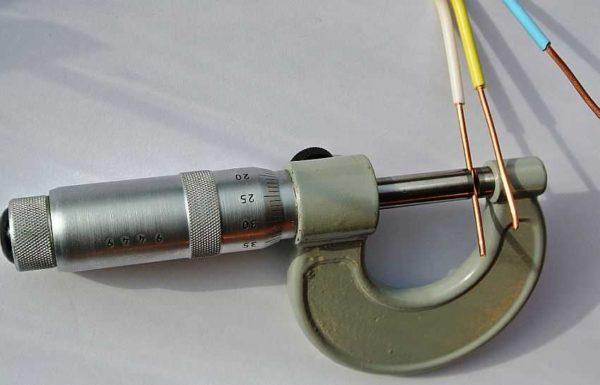
Which measuring device is better in this case? If we talk about mechanical models, then the micrometer. He has a higher accuracy of measurements. If we talk about electronic versions, then for our purposes they both give quite reliable results.
If you have neither caliper nor micrometer, take a screwdriver and a ruler with you. You’ll have to strip a pretty decent piece of conductor, so you’re unlikely to do without buying a test sample this time. So, remove the insulation from a piece of wire 5-10 cm. You wind the wire on the cylindrical part of the screwdriver. The coils are placed closely one to another, without a gap. All turns should be complete, that is, the “tails” of the wire should stick out in one direction – up or down, for example.
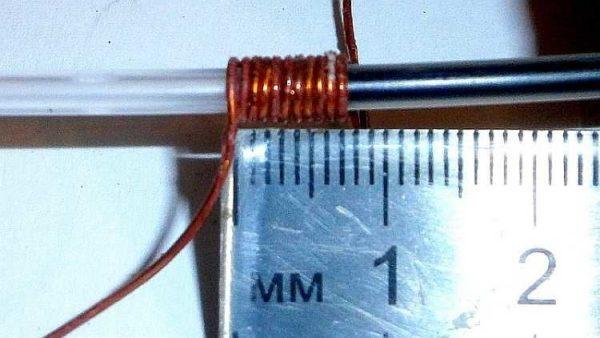
The number of turns is not important – about 10. You can do more or less, it’s just easier to divide by 10. Count the turns, then apply the resulting winding to the ruler, aligning the beginning of the first turn with the zero mark (as in the photo). Measure the length of the area occupied by the wire, then divide it by the number of turns. You get the diameter of the wire. That’s how simple it is.
For example, let’s calculate the size of the wire shown in the photo above. The number of turns in this case – 11, they occupy 7.5 mm. Dividing 7.5 by 11, we get 0.68 mm. This will be the diameter of this wire. Then you can look for the cross-section of this conductor.
Looking for the cross-section of the wire by diameter: formula
The wires in the cable have a cross-sectional shape of a circle. Therefore, we use the formula for the area of the circle in the calculations. It can be found using the radius (half of the measured diameter) or diameter (see formula).

For example, let’s calculate the cross-sectional area of the conductor (wire) by the size calculated earlier: 0.68 mm. Let’s first use the formula with the radius. First we find the radius: divide the diameter by two. 0.68 mm / 2 = 0.34 mm. Then we substitute this figure into the formula
S = π * R2 = 3.14 * 0.342 = 0.36 mm2 .
Calculate it this way: first we square 0,34, then multiply the resulting value by 3,14. We got the cross-section of this wire 0,36 square millimeters. This is a very thin wire, which is not used in power networks.
Let’s calculate the cross-section of the cable by diameter, using the second part of the formula. It should turn out exactly the same value. The difference can be in thousandths because of different rounding.
S = π/4 * D2 = 3.14/4 * 0.682 = 0.785 * 0.4624 = 0.36 mm2.
In this case, we divide the number 3.14 by four, then square the diameter, and multiply the two resulting figures. We get a similar value, as it should be. Now you know how to find out the cross-section of the cable by diameter. Whichever of these formulas is more convenient for you, use it. There is no difference.
Table of correspondence of wire diameters and their cross-sectional area
Carry out calculations in the store or on the market does not always want or have the opportunity. In order not to waste time on calculations or not to make a mistake, you can use the table of conformity of diameters and cross sections of wires, which has the most common (normative) sizes. It can be transcribed, printed out and brought with you.
| Conductor diameter | Conductor cross section |
|---|---|
| 0.8 mm | 0.5 mm2 |
| 0.98 mm | 0.75 mm2 |
| 1.13 mm | 1 mm2 |
| 1.38 mm | 1.5 mm2 |
| 1.6 mm | 2.0 mm2 |
| 1.78 mm | 2.5 mm2 |
| 2,26 mm | 4.0 mm2 |
| 2.76 mm | 6.0 mm2 |
| 3,57 mm | 10,0 mm2 |
| 4,51 mm | 16,0 mm2 |
| 5,64 mm | 25.0 mm2 |
How to work with this table? As a rule, cables have a marking or tag on which its parameters are indicated. It indicates the cable marking, the number of cores and their cross-section. For example, VVNG 2×4. We are interested in the parameters of the core and these are the numbers that stand after the sign “x”. In this case, it is stated that there are two conductors with a cross section of 4 mm2. Here we will check whether this information corresponds to reality.
How to work with the table
To check, conduct a diameter measurement using any of the methods described, then check with the table. It indicates that with such a cross-section of four square millimeters, the wire size should be 2.26 mm. If the measurements you have the same or very close (measurement error exists, since the devices are not ideal), everything is normal, you can buy this cable.
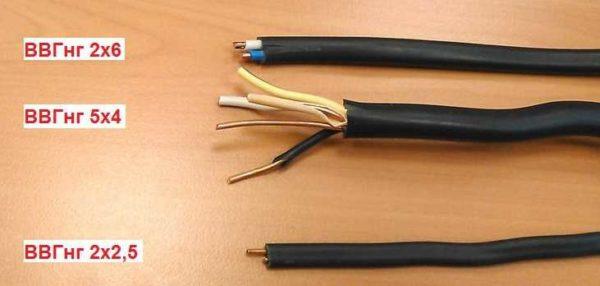
But much more often the actual diameter of the conductors is much smaller than the declared one. Then you have two ways: look for a wire from another manufacturer or take a larger cross-section. For it, of course, you will have to overpay, but the first option will require a fairly long period of time, and not the fact that you will be able to find a cable that complies with GOST.
The second option will require more money, as the price depends significantly on the declared cross-section. Although, not the fact – a good cable, made to all standards, can cost even more expensive. This is understandable – the cost of copper, and, often, and insulation, in compliance with technology and standards – much more. Therefore, manufacturers and trick, reducing the diameter of wires – to reduce the price. But such savings can turn out to be a disaster. So be sure to take measurements before buying. Even from trusted suppliers.
And one more thing: examine and feel the insulation. It should be thick, solid, have the same thickness. If besides the change in diameter and insulation problems – look for a cable from another manufacturer. In general, it is desirable to find products that meet the requirements of GOST, not made according to TU. In this case, there is hope that the cable or wire will serve for a long time and without problems. Today it is not easy to do this, but if you divide the wiring in the house or connect electricity from the pole, quality is very important. Therefore, it is probably worth looking for.
How to determine the cross section of a stranded wire
Sometimes conductors are used multicore – consisting of many identical thin wires. How to calculate the cross-section of the wire by diameter in this case? The same way. You make measurements/calculations for one wire, count their number in the bundle, then multiply by this number. That’s how you find out the cross-sectional area of a stranded wire.
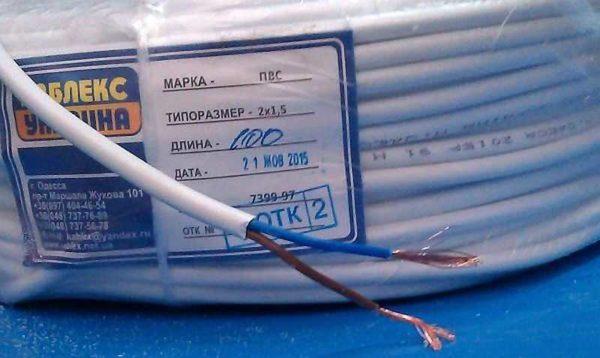

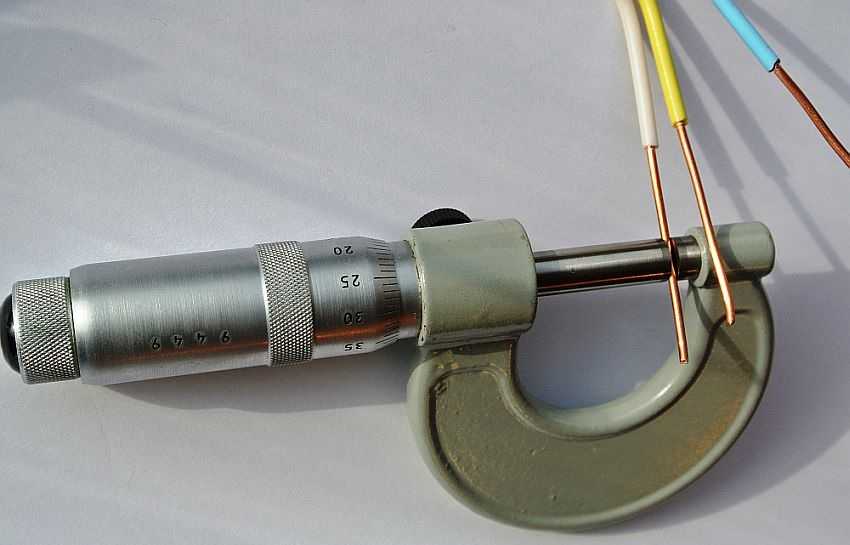
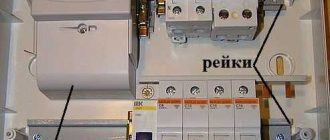




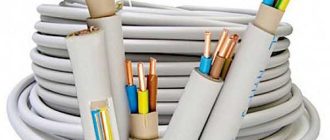
Hey, I once needed to figure out the right cable size for my DIY project. I used this formula: cross-section equals diameter squared times pi over four. It helped a ton! Knowing the right wire thickness is crucial for safety and performance, especially when dealing with high current.